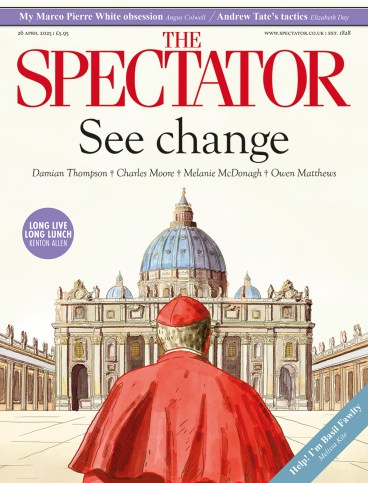
Ordinary Romans, famous for their cheerful working-class familiarity, loved Pope Francis for his common touch. For the first time in living memory, they will have the opportunity of turning out on the streets to say their final farewells to a Pope, as Francis willed that he be buried in the papal basilica of Santa Maria Maggiore on the Esquiline hill rather than in the vaults of St Peter’s. His will be the first papal burial procession to the Basilica since Clement IX’s in 1669. Unlike his predecessors, though, Francis insisted on plainness, economy and simplicity. His first arrival in the Vatican as Pope was by public bus. His departure, in a plain wooden coffin, is likely to be equally low-key and dignified.
The mortal Pope dies, but the Eternal City lives. And, indeed, is reborn. Like a Parioli matron shedding her curlers, pins and hairnet in anticipation of a major family celebration, Rome’s monuments are emerging from shrouds of cladding and scaffolding ready for their close-up. The angels and river gods of the Ponte Sant’Angelo and the Piazza Navona shine as blinding white as the day they emerged from Bernini’s workshop. The ancient granite basins of the Piazza Farnese fountains shimmer with an ethereal bluish light.
The big occasion is the Papal Jubilee year of 2025, a four-times-a-century celebration expected to draw a whopping 32 million visitors. That’s more than ten times Rome’s population. Holy Doors have been opened in the four papal basilicas, plus an extra one in Rome’s Rebibbia prison, and any pilgrim who passes through these portals will earn a plenary indulgence with ‘the remission and forgiveness of sins’ including ‘suffrage to the souls in Purgatory’, according to the Jubilee Penitentiary Guide.










Comments
Join the debate for just £1 a month
Be part of the conversation with other Spectator readers by getting your first three months for £3.
UNLOCK ACCESS Just £1 a monthAlready a subscriber? Log in